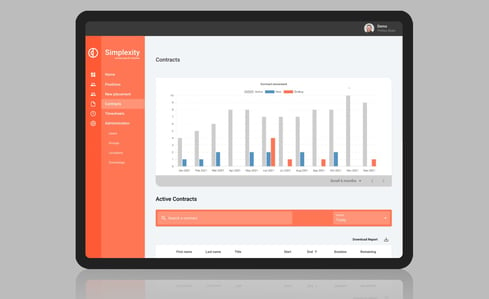Today, employee wellbeing and workplace wellness are no longer just buzzwords, they are integral to organisational success. But leaders may have to rethink what well-being means if they want to keep morale high and keep productivity at its highest levels. Oncore will try to explore what this means for executives and the corporate culture in Australia.
Is Australia in a workplace wellbeing crisis?
In recent years, corporate investments in employee well-being have skyrocketed. However, a new Gartner survey indicates that Australian workers are at the precipice of a well-being crisis. The study concludes that employee wellness started to decline in late 2022 and continues to fall to this day.
The same survey found that financial, physical and mental wellness is now at an all-time low of 22.5% and 25.3%, respectively. This data suggests that some three-quarters of Australian employees feel overwhelmed and enjoy a poor work-life balance due to the demands of their jobs. Similar findings emerged from Indeed’s 2023 Workplace Wellbeing Report, which revealed that fewer than one in four workers (23%) thrive at work.
Research by global workplace wellbeing leader TELUS Health shows the overall mental health score of employees in Australia remains at COVID-19 pandemic levels. The number of people impacted by mental health issues, and the severity of those issues, has grown since 2019, with our latest Mental Health Index (MHI) report showing 38 per cent of workers have a high mental health risk, and 37 per cent have a moderate mental health risk.
Declining wellness is a notable trend with significant implications for employee morale, engagement and productivity. So, it’s high time for decision-makers to take the lead and spearhead a paradigm shift regarding wellbeing in the workplace.
Revamping Workplace Wellness and Wellbeing
The Black Dog Institute reports that poor mental health in the workplace incurs significant costs to the economy. Untreated mental health conditions cost Australian workplaces $10.9 billion per year. $4.7 billion in absenteeism, $6.1 billion in presenteeism and $146 million in compensation claims, according to a PwC and Beyond Blue report on mental health in the workplace. As mental health stands as a cornerstone of workplace wellbeing, it is evident that leaders must proactively tackle mental health issues among their workforce.
An initial step could involve acknowledging the pervasive nature of mental health challenges, and recognising that they can affect anyone within the organisation. Diminishing stigma and encouraging employees to seek assistance are vital components of any robust corporate well-being initiative.
Similarly, Deakin University's research advises corporate leaders to reimagine employee wellbeing beyond surface-level benefits, as conventional leadership methods often overlook the multidimensional aspect of employee wellbeing. Employee wellbeing should serve as a strategic priority rather than a mere item to check off a list.
Successful organisations integrate staff wellbeing into their business objectives. This entails reassessing workloads, advocating for improved work-life balance, and investing in employee wellness programs and avenues for personal growth.
Considering that "Australian jobseekers remain keenly interested in remote work," as noted by Indeed Hiring Lab’s Senior Economist Callam Pickering, permitting employees to work from home where feasible is likely to enhance overall well-being and engagement.
Furthermore, diversity, equity, inclusion, and belonging are intricately linked to employee mental health; a sense of belonging fosters comfort, connection, and contribution. Therefore, DEI constitutes another crucial pillar of an effective employee well-being policy and a successful recruitment strategy. Embracing this approach empowers managers to hire with the positive impacts of diversity in mind.
Aftershocks from the pandemic continue
McEwan suggested the data is consistent with the fourth wave of a pandemic, which is characterised by psychological trauma and economic injury.
“The negative impact of the pandemic on employee wellness is compounded by the additional financial stress many employees are currently facing,” McEwan added. “It’s not just about increased workload or burnout, Australians are battling high-interest rates and the fastest growing annual increase in the cost of living since 1990. They’re likely to do the bare minimum this year, with many telling themselves there’s more to life than work.”
The human-centric revolution
With manager quality and respect named as the top reasons to leave a job, McEwan believes we are in the midst of a new human-centric workplace era.
“Just like the industrial and digital revolutions that completely changed the way we work and live, the human-centric revolution is set to disrupt life and work for the long term,” said McEwan. “Good leaders know people can’t run marathons all the time. Instead, organisations should focus on small sprints, flexible working conditions and providing access to meaningful wellbeing and psychological support.”
Mentally healthy work and why it matters
Work can come in many different forms. But mentally healthy workplaces generally have a few things in common. They:
- Protect against risks to mental health. Mentally healthy work prevents harm to your mental health. Among other things, this means fair workloads. Fair work practices. And a safe environment.
- Promote well-being and the positive aspects of work. Mentally healthy work means things such as fairness, inclusion, and employee development. Good culture thrives from good work.
- Support people with poor mental health. In a mentally healthy workplace, your mental health is prioritised. Awareness, capability, commitment, and meaningful support exist. To help workers feel better, earlier.
Employee well-being and its effect on business
The positive effects of well-being on employees as human beings are crystal clear. But did you know that your organisation as a whole can also benefit if you make workplace wellbeing a priority?
Focusing on workplace well-being is not just a moral obligation; it’s a smart business decision. Companies that invest in their staff's well-being typically experience several benefits. These include:
- Lower staff turnover: A positive workplace culture that promotes wellbeing reduces staff turnover rates and the associated costs of recruitment, onboarding and training.
- Increased morale and productivity: Indeed's own 2022 Workplace Wellbeing Report found that stressed employees are more likely to lose concentration, become less motivated and make more mistakes. Conversely, workers who are physically and mentally well tend to be more productive and engaged in their work. The last thing you want in your organisation is ‘grumpy staying’ – discontent staff who stay on but are unhappy and thus less productive.
- Enhanced employer reputation: Organisations that care about employee well-being typically enjoy a better market reputation, making it easier to attract top talent.
- More innovation and creativity: If your staff are well-rested and mentally healthy, they are more likely to think out of the box and come up with innovative ideas.
- Cost savings: Investing in preventive measures for employee well-being can save you money in the long term, for instance by reducing health-related absenteeism.
Benefits of mentally healthy work
Mentally healthy work is good for everyone. For workers, it:
- helps you feel more engaged
- helps you be more productive
- helps to contribute to your sense of well-being (which extends to life outside the workplace).
For businesses, mentally healthy work:
- improves productivity
- improves commercial outcomes
- helps attract and retain staff
Research has shown that investment in mental health has a positive return on investment. This can range from an average of $2.30 upwards for each dollar invested.
Key facts – mental health at work
In Australia, there have been significant improvements in becoming more mentally healthy at work, but there is more work to do.
- Nearly 1 in 5 people experience poor mental health each year. Nearly half of us will experience poor mental health during our lives.
- Many people spend a third of their lives at work.
- Poor mental health costs the Australian economy from $12.2 to 22.5 billion each year (according to the Australian Government Productivity Commission).
- Work is a key setting to improve and support mental health.












_11zon%20(1).jpg?width=302&height=124&name=linkedin-sales-solutions-vqWWOnA6--M-unsplash%20(2)_11zon%20(1).jpg)






